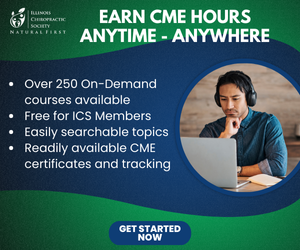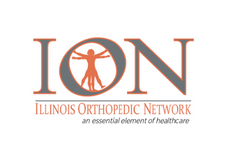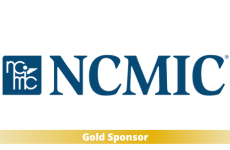
Where is Chiropractic Going? (with Kristi Hudson)
Chiropractic Future is building a stronger profession through big data and powerful, volunteer-driven initiatives. Watch the video to learn more!
Referenced Links:
CF Newsletter
Data Lake Information
Reimbursement information (like the patient flyers)
Government Affairs Hub (all states in one place)
Transcript:
Marc:
All of you hear from me on a regular basis about things that are happening in Illinois and what’s going on. You’ve also heard me talk a lot about the Chiropractic Future Strategic Plan. So I wanted you to hear from somebody else who is really in the thick of the Chiropractic Future Strategic Plan and with the Chiropractic Future Organization. So I’ve asked Kristi Hudson, who is currently the chairperson, thank you, Kristi, for everything that you do for chiropractic, but in this case, thank you for everything you do with Chiropractic Future as the Leadership Chairperson. So, Thanks for jumping on a call, and just wanted to talk to you about Chiropractic Future. And, okay, let’s do it this way. What is your favorite part? What is the coolest part about Chiropractic Future, and what they have going on for the chiropractic profession?
Kristi:
You know, I think it just depends on the day of the week and what moment I’m in, but at the moment, I would say DASH, which is our data lake project is my favorite project, and it may be my favorite right now, because we’re at the very beginning stages of beta testing, and I think that of all the projects we have right now, foundationally, it’s going to have the biggest impact on the chiropractic profession and helping to change things like reimbursement and legislation and all of those things. I mean, it’s going to be very pivotal in achieving our goals.
Marc:
Yeah, it’s going to be huge, and most people may not completely understand what that is. So let me put it in different terms. Right now, insurance companies own all of your data. You send them all of your claim forms. You tell them the stories on your claim forms, you give them, and send them your documentation. They have this huge swath of data on your practice, on what you do and everything that you do, as far as billing, documentation, they’ve got it all. We don’t. We have leveraged that information as a profession, we know the efficacy of chiropractic, and then the issue really is being able to demonstrate that with big data. So what Kristi’s talking about is this DASH, right? It’s this data lake project, where as a profession, we’re going to accumulate just truckloads of information, and own our own data as a profession, all HIPAA compliant be identified. So we’re not we’re not housing or holding patient data, but instead, we’re utilizing data to be able to clearly demonstrate what we already know, which is the high, high efficacy, both and results and for the patients, but also from a financial perspective for companies and for the world. So anyway, yeah.
Kristi:
It’s really going to be huge. I mean, we’re one of the youngest professions within healthcare. We have the least amount of research, not for a lack of incredible researchers, but according to Dr. Heidi Havvik, there are around 125,000 – 130,000 researchers in healthcare worldwide. There are less than 100 who are focused on chiropractic research. And if any of you have ever been involved or read about chiropractic research, you know that our patient pools tend to be small. They tend to be near the researcher, and they take years to gather that data and then publish those papers. And according to Dr. Haavik with DASH, the data lake project, that is going to be expedited in an unbelievable way, because you have hundreds of 1000s of de-identified HIPAA compliant patient records, so you can see from beginning to end their entire course of treatment. You’re going to be able to pull that information, be able to write a paper, and publish it, and this will take a fraction of the amount of time. So what would typically take several years could take only a year. And this is going to be a game changer for our profession. Think about it from a marketing perspective, from a scope of practice perspective, from the reimbursement perspective, legislative perspective, it’s hard to argue with research, and boy, are we going to be able to fight those fights.
Marc:
Yeah, I look forward to it also, from a standpoint of being able to sit down in a committee at the State House, even is as we end up embattled with, we’re always embattled with, with the insurers, and be able to come in and clearly demonstrate to both legislators, to companies, to whatever, and say, quite candidly, you’ve been taught wrong. You’re being taught wrong. And here is what the actual data says. And instead of walking in with great studies, and we have some great studies that demonstrate the efficacy, but walking in and saying, based on a million different cases, this is what we’re seeing. The data, and data that large, becomes pretty much irrefutable. And so that’s what I’m looking forward to, is being able to have that power as we sit down with companies here in Illinois to move the needle, to increase the chiropractic coverage, to increase reimbursement, increase access, and increase patients’ health. I mean, that’s really what we’re here for. So I’m excited about that too. Yeah. Now, I gotta be honest, I’m a little selfish in this area, maybe, but I’m also super excited about the reimbursement work group and some of the things that are happening there. Tell me about what is your favorite thing as far as the reimbursement work group and what they’re doing.
Kristi:
Well, I think I am really excited about the three new patient resources that you and your work group were able to create and very quickly in the last quarter, because I think a lot of times, as a profession, we look at it as we have to fight this battle alone, when, in reality, when it comes to reimbursement, when it comes to coverage and access to chiropractic care, the person who actually is going to be able to move the needle the fastest is the patient. But first, they have to understand what are the limitations that are preventing them from having access to their chiropractor and the chiropractic care. Because, you know, patients all think of their insurance card as an American Express accepted worldwide, and it’s and it covers everything in your chiropractic office. And being that, when I started in chiropractic, the first nine months, I was in Dr. Foxworth’s office, and just they are devastated to find out that their chiropractic coverage is actually phantom benefits, like they’re still going to have to pay out of pocket for this. It doesn’t actually exist. And so being able to have a resource that talks to them about prior authorization, about high co pays, and about all of these different things that we feel from a provider level, and then in the office, but being able to explain it to them with a resource and then giving them talking points to go back to talk to their employer about it, because the truth is, the person who picked that health plan was told they had chiropractic benefits, and didn’t find out that it wasn’t what they thought it was, until the patients come back and say, Hey, I was told that I didn’t have chiropractic coverage. And this is why, and that really does help us fight it from both ends, because our patients deserve access to chiropractic care. They deserve to get all of the benefits of their health insurance and to get what they think they have. And so I think that’s a really great way for our patients to speak up for themselves and demand better coverage and demand better access to their chiropractor.
Marc:
Yeah, we’ve identified 30-plus insurance practices. Specifically to insurance practices we use slightly different terms in the quiet of our meetings, but that are injustices, and that’s probably the easiest way to put it, these are practices that insurance companies utilize to be able to diminish care that patients should have access to, roadblocks to patients recoveries, we consider that to be critical components of things that we’re addressing. One is through patient education, right? And that’s the resources you’re talking about. The other is some other directed approaches. In fact, if you weren’t aware, the Department of Justice recently released and started what they’re calling their Anti-Competitive Task Force, and they have actually requested public comment on these issues, on regulations and laws that very well may be developing or creating an anti-competitive marketplace. Well, guess what? We have a swath of issues that we’re going to take to them in the coming weeks. It’s a tight deadline. It’s a lot of work that goes into this. And we’re a volunteer organization. But these things are critical, and we need people to get involved in other ways as well. But these are the things I think, Kristi, that you and I find near and dear to our hearts, the things that we deal with on a daily basis. But we’re just scratching the surface as far as what Chiropractic Future is doing and and you know, we didn’t even talk about the fact that if you want to know something about a particular state and their laws, if you want to know how they handle telehealth with patients in their state, and if you can utilize telehealth with their patients. Or if you’re just looking for some general information about another state and how they practice well, the government affairs hub is pretty amazing, too. And in fact, I just was talking to one of our doctors who actually serves in a statewide capacity for the state, who is utilizing that, they’re doing some comparisons and some of their conversations. And she was super thrilled with having all of that information, you know, in a small box in one location for all 50 states. That’s another pretty cool resource as well.
Kristi:
It really is, and it’s interesting because I was actually talking to a student earlier this week who really wants to do animal chiropractic, and was really unclear as to where she could practice as an animal chiropractor. And I was like, well, actually, I can’t answer that question for you. And so I sent her the link for the GA hub resource. And she was like, Oh, wow, this is amazing. I had no idea that this existed. And the reality is this information is public, and it’s in about 500 different web pages around, you know, for each state, and we were able to pull all that data into one resource to make it really easy for chiropractors, students, for anyone, to be able to have access to that information. And I think that’s wonderful. We also have a road to practice resource for students that talks to them about now they all have graduated. Now, what? What’s the next thing that happens? You know, then the first thing is, join your state association. And I don’t have to sell your audience the importance of that and what they do, how to get your NPI number, how to get a tax ID number, all the steps getting malpractice insurance, and it talks about all the different steps, but it also breaks it down by state, like, what are the most common insurers in that state? Is chiropractic covered under PI, work comp, Medicare, or Medicaid? But it has all of that information, including the scope of practice, which varies a lot from state to state, because often when I’m speaking at schools, and I know this happens to you too, and you’ll have a student who tells you about the kind of practice they’re going to open, and when you go and say, Well, where do you want to practice, only to find out that modle of practice is not acceptable in that state. So it gives them an idea of what they can and can’t do depending on where they practice, and I think that’s huge. We add new resources all the time. There are resources for patients, associations, doctors, and students. You know, we could be on here for like 10 hours and talk about every project, because there are so many different things that we’re working on. But it really just comes down to, you know, focusing on better access, better reimbursement, and a brighter future for all chiropractors, right? That’s what we want. That’s the home run.
Marc:
Yeah, that’s why you give your time. That’s why I give mine, and that’s why an incredible group of leaders, and if you saw the list of those who are really pouring their lives into the future of chiropractic through Chiropractic Future, you would be quite amazed. In fact, we encourage you to jump out, take a look, go look at the website, sign up for the newsletter, and get involved. Find ways that you can plug yourself into making a difference for the chiropractic profession moving forward. It’s what Kristi and I love. We’ve been involved in a project for a very long time. I’ve had the privilege of being involved in it from the very beginning, and so yeah, there. You just really need to pour yourself into it. Take a look and get involved.
Kristi:
Yes, please do. And you know, sign up for that newsletter so you can always see the highlights of what is going on, every new project, every little milestone that we hit, every win that we have, which is really every win that you have as part of this profession. And then, if you’re on social media, follow us on Instagram and Facebook, so you can get the most up to date information, because that gets updated on a daily basis of what’s going on, but, yeah, we have over 100 volunteers and 18,000 volunteer hours, which I would say that’s probably on the low end, because nobody accurately, really, I think, tracks their volunteer hours, but it’s crazy, what we’re able to accomplish with just a group of volunteers.
Marc:
It’s incredible. So jump in, get involved. Plug yourself in, donate. The entire funding for the project is done through the generosity of those in chiropractic, and so we’d encourage you to jump in and get involved in that way as well. But thanks for jumping in. Thanks for joining us, Kristi. I really, really appreciate this conversation. It’s fantastic, and it gives our doctors in Illinois something else other than just me to listen to. But thank you all for joining us today. We’ll catch you next week.

















